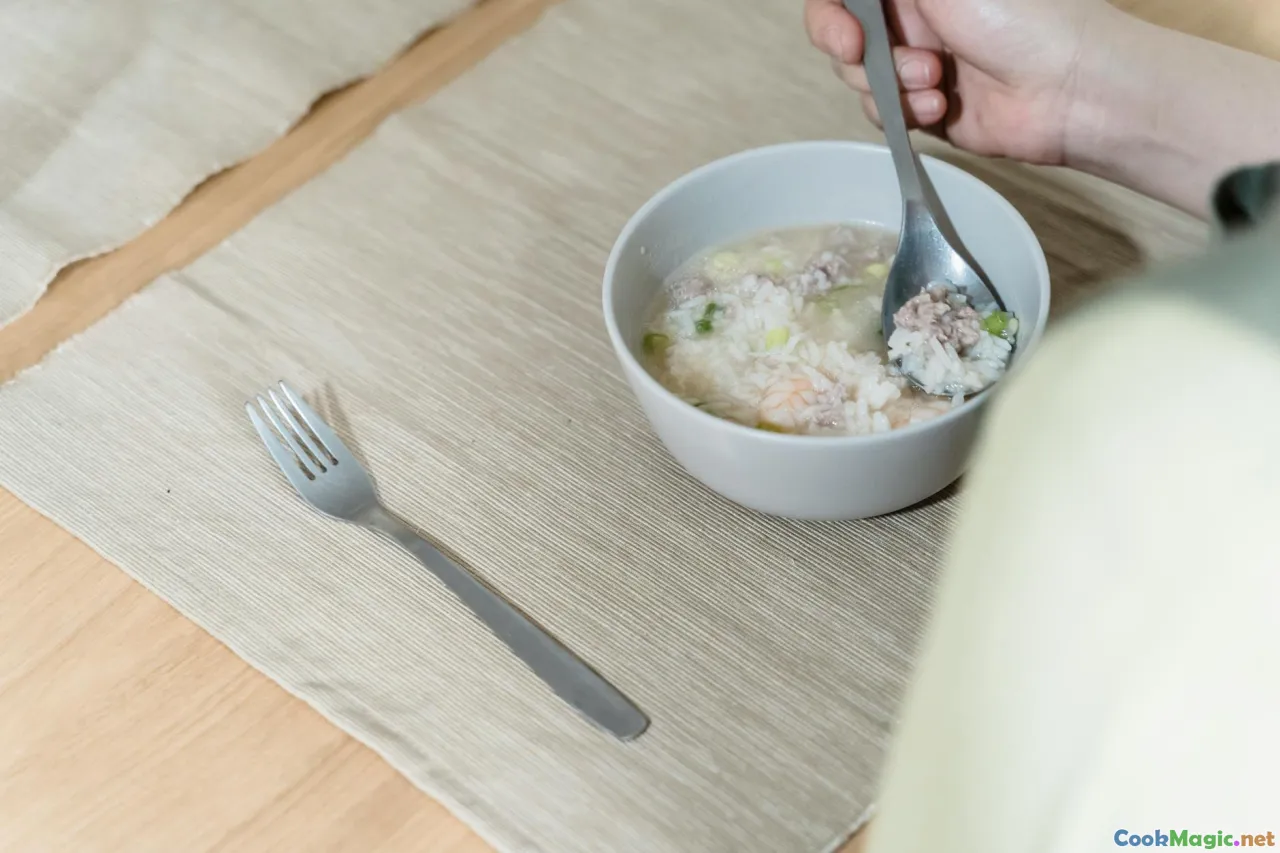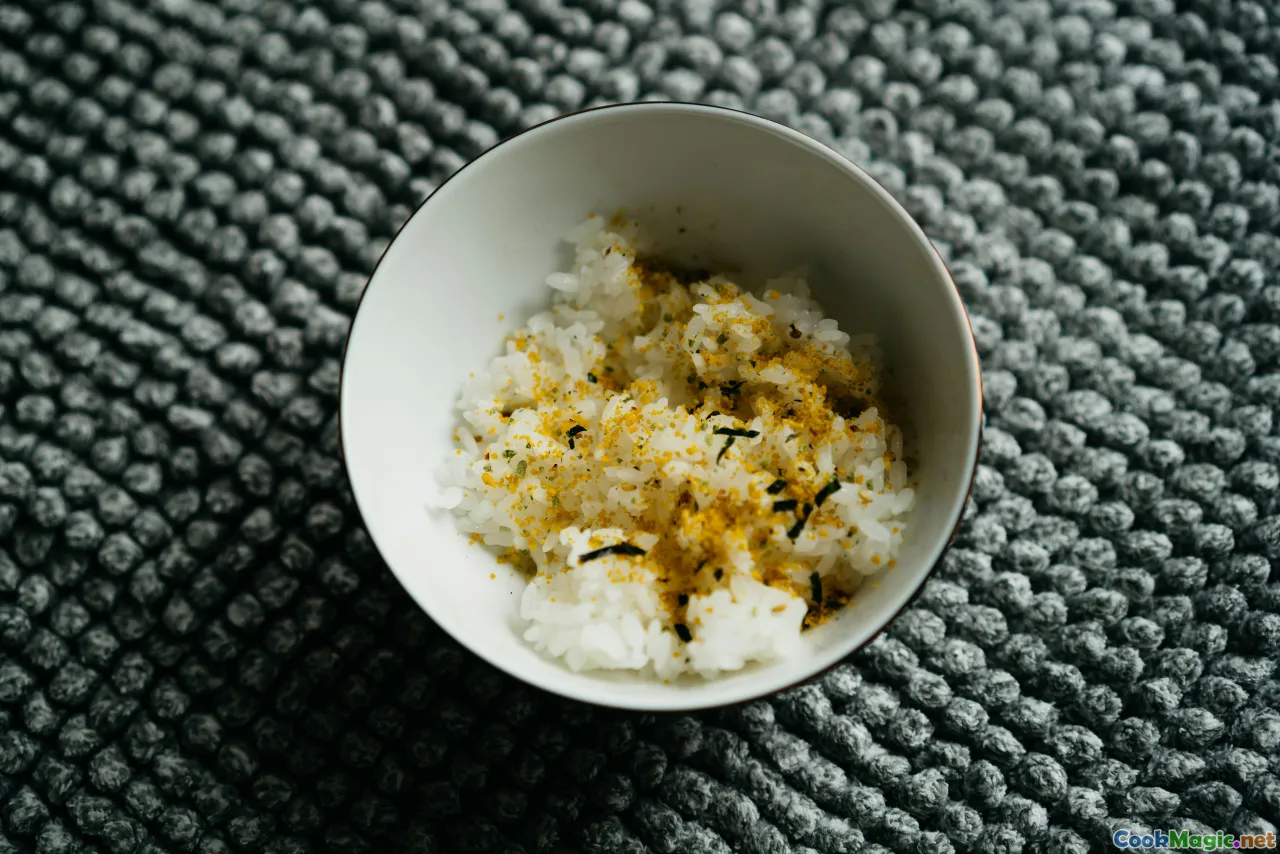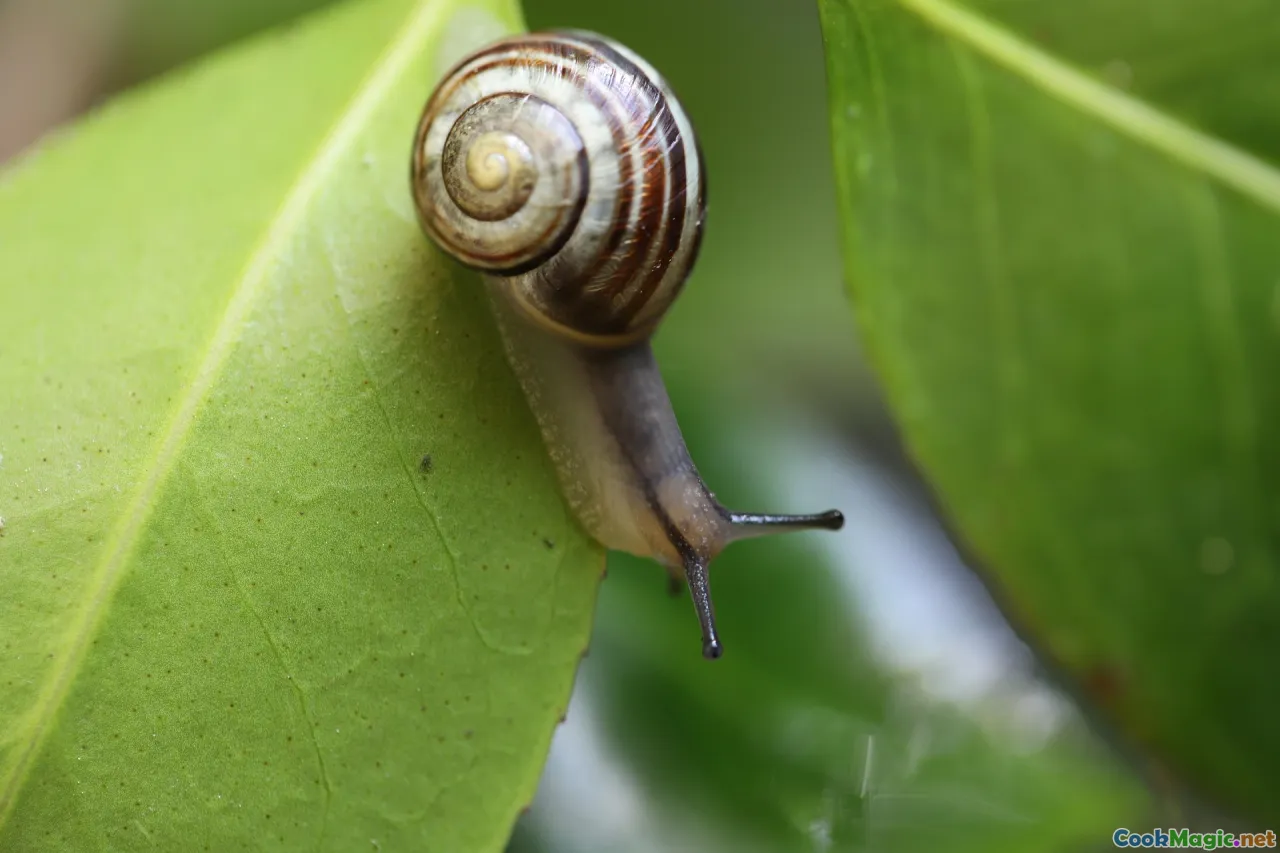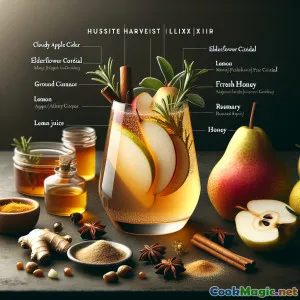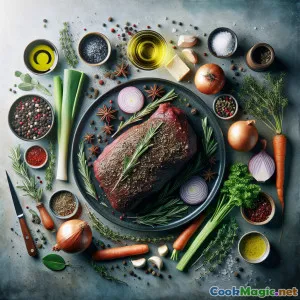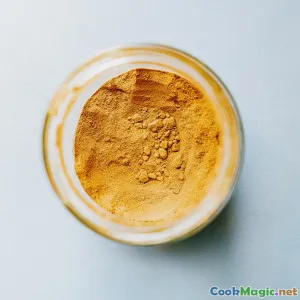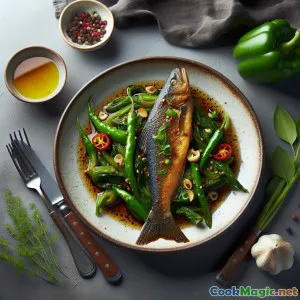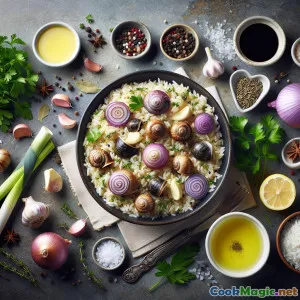
Gachas de Arroz Inglesas Cremosas con Caracoles de Río
(Creamy English Rice Porridge with River Snails)
(0 Reseñas)0
822
julio 16, 2025
Informar de un problema
Ingredientes
-
120 grams Arroz de grano corto
(Enjuágalo hasta que el agua quede clara; se puede sustituir por Arborio.)
-
300 grams Caracoles de río vivos
(Cepillado y purgado; lo más fresco posible.)
-
2 small Chalotes
(Picado finamente.)
-
2 cloves Dientes de ajo
(Picado finamente.)
-
1 medium Puerro (solo la parte blanca)
(Partido por la mitad y cortado en láminas finas.)
-
1 large Hoja de laurel
(Fresco o seco)
-
1 liter Caldo de pescado o pollo
(Preferencia por bajo contenido de sodio.)
-
100 ml Leche entera
(Añade cremosidad.)
-
15 grams Mantequilla sin sal
(Para saltear los aromáticos.)
-
2 sprigs Tomillo Fresco
(Extra para guarnición.)
-
2 tbsp Perejil de hoja plana
(Finamente picado.)
Sal marina, to taste
Pimienta negra, to taste
-
1/2 tsp Ralladura de limón
(Rallado fino, para terminar.)
(Enjuágalo hasta que el agua quede clara; se puede sustituir por Arborio.)
(Cepillado y purgado; lo más fresco posible.)
(Picado finamente.)
(Picado finamente.)
(Partido por la mitad y cortado en láminas finas.)
(Fresco o seco)
(Preferencia por bajo contenido de sodio.)
(Añade cremosidad.)
(Para saltear los aromáticos.)
(Extra para guarnición.)
(Finamente picado.)
(Rallado fino, para terminar.)
Nutrición
- Porciones: 2
- Tamaño de porción: 1 tazón (350g)
- Calories: 380 kcal
- Carbohydrates: 64 g
- Protein: 19 g
- Fat: 6 g
- Fiber: 2 g
- Sugar: 2 g
- Sodium: 680 mg
- Cholesterol: 47 mg
- Calcium: 90 mg
- Iron: 3.4 mg
Instrucciones
-
1 - Purgar y limpiar caracoles:
Enjuaga los caracoles de río en varios cambios de agua fría con sal. Déjalos reposar de 30 a 60 minutos para favorecer la liberación de cualquier arenilla. Si es posible, la purga ya se realizó en la fuente. Escurre, enjuaga; repite hasta que el agua salga limpia. Reserva.
-
2 - Preparar aromáticos:
Pica finamente las chalotas y el ajo, y corta en láminas el puerro si lo usas. Pica hierbas frescas y ralla la piel de limón para decorar, si lo deseas.
-
3 - Saltear Aromáticos:
Derrite la mantequilla en una olla profunda a fuego medio. Agrega chalotas, ajo y puerro. Cocina suavemente durante 3–4 minutos hasta que estén tiernos y fragantes, sin dorarse.
-
4 - Comienza las gachas de avena:
Agrega el arroz lavado, removiendo para que queden cubiertos los granos. Vierte el caldo y añade la hoja de laurel. Llévalo a hervir a fuego suave, removiendo ocasionalmente.
-
5 - Cocina a fuego suave hasta que quede cremoso.:
Reduce el fuego y cocina destapado durante 25–30 minutos, removiendo con frecuencia para que el arroz no se pegue, hasta que los granos se deshagan y alcancen una consistencia cremosa y espesa. Si está demasiado espeso, añade un poco más de caldo.
-
6 - Escalda los caracoles por separado.:
Mientras la papilla de avena hierve a fuego lento, hierve los caracoles limpios en una olla aparte durante 3 minutos. Escurre y enjuaga. Retira con cuidado la mayor parte de los caracoles de sus conchas; desecha las conchas.
-
7 - Gachas de avena finalizadas:
Añade caracoles de río preparados y tomillo. Mezcla leche para una textura más aterciopelada (opcional). Sazona las gachas de arroz con sal marina y pimienta negra.
-
8 - Adornar y Servir:
Sirve las gachas de avena en cuencos tibios. Espolvorea perejil y ralladura de limón fresca, añade tomillo extra como guarnición. Disfruta bien caliente.
Enjuaga los caracoles de río en varios cambios de agua fría con sal. Déjalos reposar de 30 a 60 minutos para favorecer la liberación de cualquier arenilla. Si es posible, la purga ya se realizó en la fuente. Escurre, enjuaga; repite hasta que el agua salga limpia. Reserva.
Pica finamente las chalotas y el ajo, y corta en láminas el puerro si lo usas. Pica hierbas frescas y ralla la piel de limón para decorar, si lo deseas.
Derrite la mantequilla en una olla profunda a fuego medio. Agrega chalotas, ajo y puerro. Cocina suavemente durante 3–4 minutos hasta que estén tiernos y fragantes, sin dorarse.
Agrega el arroz lavado, removiendo para que queden cubiertos los granos. Vierte el caldo y añade la hoja de laurel. Llévalo a hervir a fuego suave, removiendo ocasionalmente.
Reduce el fuego y cocina destapado durante 25–30 minutos, removiendo con frecuencia para que el arroz no se pegue, hasta que los granos se deshagan y alcancen una consistencia cremosa y espesa. Si está demasiado espeso, añade un poco más de caldo.
Mientras la papilla de avena hierve a fuego lento, hierve los caracoles limpios en una olla aparte durante 3 minutos. Escurre y enjuaga. Retira con cuidado la mayor parte de los caracoles de sus conchas; desecha las conchas.
Añade caracoles de río preparados y tomillo. Mezcla leche para una textura más aterciopelada (opcional). Sazona las gachas de arroz con sal marina y pimienta negra.
Sirve las gachas de avena en cuencos tibios. Espolvorea perejil y ralladura de limón fresca, añade tomillo extra como guarnición. Disfruta bien caliente.
Más información sobre: Gachas de Arroz Inglesas Cremosas con Caracoles de Río
Rice Porridge with River Snails: An English Culinary Curiosity
Rice porridge—sometimes lovingly called ‘congee’ or ‘gruel’—may not immediately conjure up visions of rural English kitchens or lush British riversides. Yet the evolution of this elegant dish, Rice Porridge with River Snails, is woven with threads of resourcefulness, countryside tradition, and a healthy sense of adventure in the kitchen.
The Uncommon Marriage of River Snails and Rice in England
Snails have crawled their way into European cuisines for centuries, becoming cultural mainstays from the classic French escargot to roasted snails in the Mediterranean and elaborate snail-themed feasts in rural England. Noted foragers and fishermen along rivers like the Severn and Avon, and even as far as wetlands in East Anglia, have long harvested river snails—both as an ingredient and occasional delicacy in hard times.
Pair them with humble rice (imported into England in the 14th century) and you get a village comfort food—slightly unorthodox, yet deeply homey. Slow-cooked rice, mellowed in broth and a whiff of English garden herbs, becomes the perfect nest for tender, subtly briny snails whose silky texture and gentle earthiness elevate each spoonful.
Tips, Substitutions, and Texture Notes
- Rice: Short-grain gives the most satisfying creamy texture—arborio is excellent if you lack true congee rice. Resist long-grain; they simply won’t break down as pleasingly.
- Snails: Ideally fresh-collected and purged for maximum flavor and minimum grit. In land-locked areas, flash-frozen or farmed snails (with a shell count adjusted) add refinement.
- Herbs: Classic English flavors—thyme or bay, ribbons of parsley—underline river snails’ delicate marine flavor rather than overwhelming it.
- Stock: Chicken or clear fish stock appeals even to faint-hearted diners wary of robust seafood aromas.
- Milk: A touch of milk right before serving, milder than cream, melds the dish, amplifying the velvet of broken down rice.
- Aromatics: Do not skip the foundation of garlic/shallot/leek, which defines good porridge; leek especially layers a gentle sweetness.
- Finishings: Parsley and a well-timed squeeze of lemon or lemon zest keep the flavors clean and bright, offsetting any earthiness from the snails.
- Serving: Serve steaming hot with a slice of rustic farmhouse loaf, or as a starter for a sophisticated dinner with an English twist.
Nourishment, Novelty, and History
Rice porridge holds a special place as global comfort food, celebrated from British gruel to Asian congee or risotto in Italia. The addition of river snails roots the dish in wild-skimming countryside history, recalling post-harvest feasts, riverside foraging, and culinary frugality—yet here made modern and tempting for contemporary palates. Nutritional content? You find a harmonious blend of lean protein, comforting grains, and gentle infusions of herbal flavor, all with modest fat and sodium compared to heartier fare.
Unique Aspects and Cultural Significance
Combining rice porridge with snails delights epicureans seeking novelty. The dish’s subtlety is ideal for showcasing the snails without intimidating less adventurous eaters. In today’s culinary Britain, ‘Rice Porridge with River Snails’ embodies the sustainable, locality-driven ethos of modern British cuisine: wild-gathered, thoughtfully prepared, and paired down to allow ingredients to shine.
This recipe was created as both a respectful nod to historic British ingredients and cuisine fusion—celebrating age-old foraging along Britain’s lush waterways with inspirations from Asia’s reverence for porridge as a curative, vital dish.
Final Thoughts
Rice Porridge with River Snails invites you to reclaim older culinary traditions—transforming humble harvest into a bowlful of comfort fortified by both nutrition and nostalgia. If you’ve never tasted snails, English river specimens are small, delicate, more vegetal than you think…and they might soon become a surprising guest star at your next breakfast, brunch, or fireside supper table.
Share this comforting, unique dish with the brave and the curious—celebrating England’s rivers, its kitchen creativity, and a rare moment when two disparate elements (rice and river snails) simmer together in fragrant, heartwarming unity.

